A few weeks back, we looked at the best guitars for recording out and about in the summer sun. Now, we’re looking at summer basses to accompany them.
What makes good summer basses?
Similarly to guitars, let’s outline criteria to determine what makes a great summer bass.
Hah! Who are we kidding? Obviously, the criteria will be similar to those in guitars! So, let’s recap…
- Acoustic: acoustic basses aren’t that popular; but, amps take up room and power
- Affordable: of course, the idea of what’s affordable varies wildly, but let’s keep things below US$200; on the road, things break – let’s not break our own hearts by breaking a $1k+ instrument
Although versatility was a criteria for guitars, I think it’s less so for bass. Because you only play single notes, there’s less. Additionally, I could only find two 3/4 size basses, that didn’t seem that great, so it was shaping up to be a terrible post.
As a final note, the selection of acoustic basses under US$200 is bad. And acoustic basses under US$200 with free shipping is barely existent. There are some bargains if you’re happy with a used instrument though.
Disclaimer: none of these products were used or tested by Light Audio Recording. This post intends to collate appropriate products based on similar criteria, that could be considered for compact and affordable recording.
J. Reynolds JR1000 – US$193.79
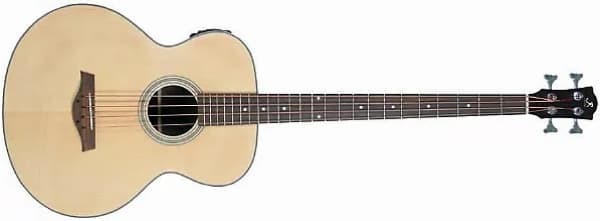
This was the cheapest new acoustic bass I could find. However, I couldn’t find a single thing about the J. Reynolds brand.
As an educated guess, they seem to be a brand slapped on Eastern-made, generic, budget, mass-produced instruments.
Be that as it may, the JR1000‘s looks like it was made for jumbo acoustic guitars, but with a bass neck and bridge. It’s a simple instrument – spruce top; “mahogany” sides; rosewood fingerboards.
I say “mahogany” because at this price, it’s not going to be the same mahogany as you’d get on a $1k+ instrument. The JR1000 has a shina back and sides, and a nato neck. For the most part, the specifics don’t matter too much. Many eastern guitar manufacturers use alternatives to actual mahogany.
If you want to plug into something like a PA for a show, or an audio interface on the beach, the JR1000 has the electronics to do so. So, as summer basses go, this should be good for budget road trips!
The shape of the body will give the JR1000 a relatively loud sound compared to other acoustic basses. It should also be quite a fat tone, and hopefully not too boomy.
De Rosa GAB47 – US$199.99
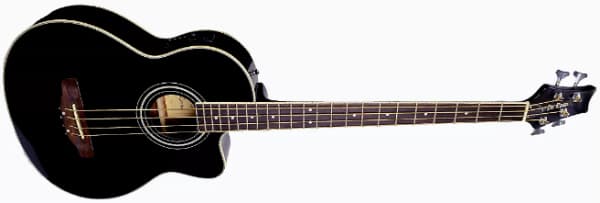
The De Rosa GAB47 is only a few dollars more than the JR1000.
Similarly to the JR1000, there doesn’t seem to be any information about the De Rosa company or brand, so it likely falls into the same category of mass-produced instruments with the branding slapped on by whoever wanted to.
For that few extra dollars, you get a little bit more work on the bass. Firstly, it comes with a cutaway design. So, useful if you want to cut the bass right through for a solo.
Secondly, it’s black. Paint costs more. For real.
In terms of wood, the GAB47 also has a spruce top. But, it has sapele sides and back. Sapele is related to mahogany, and is often used as a substitute for it by guitar manufacturers. The GAB47 has a mahogany neck, and rosewood fingerboard.
The design of the GAB47 suggests that it might not be as loud as the JR1000. But – and depending on the other instruments of course – it should have more presence in its mids, which should help give its tone more definition. That’s helpful in a band context!
Cordoba Mini II EB-E – US$199.99
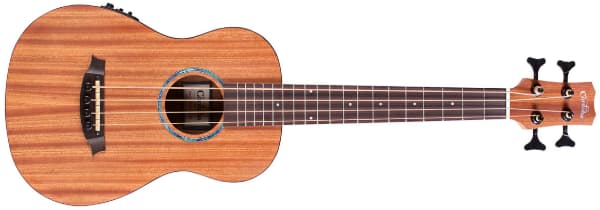
Finally, we come to the Cordoba Mini II. I think we saved the most compact for last!
From what I can make out, the Cordoba Mini II bass is close in size to my own Taylor TSBTe. So, that’s certainly a win in keeping things compact for travelling to the beach, whether in the car or on the bus.
The Mini II bass has a spruce top. Interestingly, it has ebony sides and back. I don’t think I’ve ever see that before. The neck is mahogany. Then, the fingerboard is composite. Which is odd, because that’s normally where you see ebony on a guitar.
A composite fingerboard is essentially a man-made fingerboard, rather than hacking at a tree, so it used chemicals and other materials depending on what Google result you click on.
The size of the Cordoba Mini II bass suggests it won’t be very loud. If you’re jamming with somebody playing a Hummingbird or something, it’ll probably struggle to be heard.
So, it’s just as well it has on-board electronics to plug in. This one might be better for recording and lone playing, rather than a live scenario though.
Don’t fear the used summer basses
If you’re concerned that you haven’t heard of any of those brands, it’s OK, I feel you.
If you’re happy with a used guitar, you have some more sub-US$200 options from some reputable brands,
The Ibanez AEB5E keeps coming up, as does the Dean EABC. Now, those are all in private sales, so prices vary wildly based on condition, location, shipping, and sellers’ desperation to sell. But, the instruments themselves are all between US$100-200.
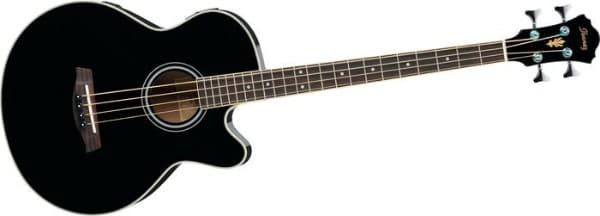
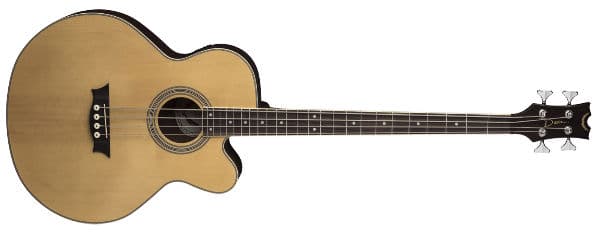
Best Basses for Summer Recording Sessions: conclusion
And there you have it: a selection of summer basses, ideal for your home, for the beach, for the shows, and for the roads in between.
Obviously, if at all possible, you should try a few basses before you buy.
Go forth and rock!
If you found this helpful, subscribe on the right hand side of this page. You’ll be notified of new posts on Thursdays, inspiring you going into the weekend.
Share your own light audio recording thoughts and experiences! There’s a Facebook group, a Subreddit, Twitter and Instagram.
Also, feel free to shoot me a coffee!
